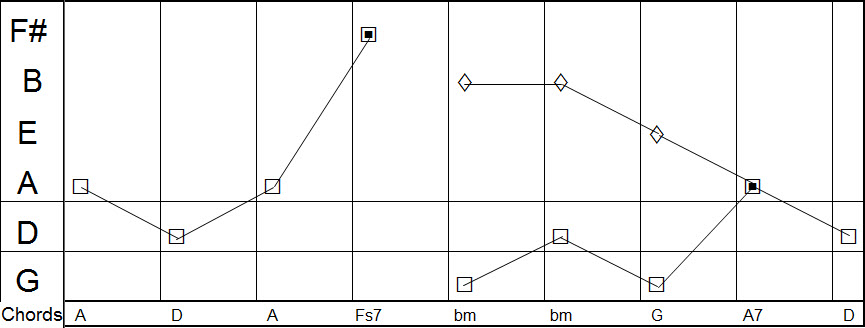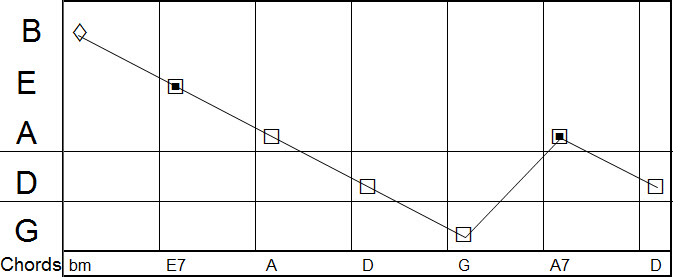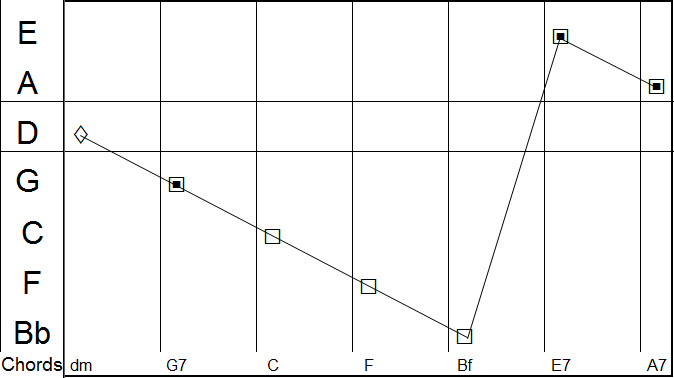Always a woman to me – Billy Joel
Recently I decided to teach this song to a few of my piano pupils as the chords seemed interesting and original to me. After a while, it really got into my head so, as ever, I got it on to the SeeChord workbench and set about finding out what exactly it is that makes this song tick.
As with most songs, it has a very conventional chord progression on the whole, but with a few interesting flash points. Lets start with the first half of the verse:
Not a lot to comment on here. Fairly interesting to start on the A (fifth) rather than the D (tonic), but this is not in itself unusual. Moving on…
Now we are getting more interesting. The jump from A-F#7 sticks out immediately. This is behaving like an interrupted cadence (V-III), with the resolution coming with the perfect cadence or A7-D a few bars later (V-I). The last 5 chords here are shown with both variations used in the song – a few simple relative minor substitutions. The verse ends on the tonic and all is well. Now for the chorus. In actual fact, I would say that this song is a classic tagline song, and therefore, this passage is the bridge (have a listen to my musical improv comedy podcast to find out more about these structures.)
This is what we like to see. A good strong fifths progression, heading down through the tonic and finishing on the G (IV). All is as expected. Now…
Here’s the action we were looking for. Firstly we notice that the fifths progression is still there, but it has moved “down” and now starts on the tonic. How is this possible without destroying all sense of key? Well the secret is that first chord on this chart – d minor. That shift from D major to d minor has changed the tonality of the whole song, and opened up a whole new set of chords, which he then marches right through with the progression. In classic and classical style, he then jumps back up with the use of a tritone substitution (I have a podcast about those too! Not comedy this time, more music theory) to the E7 and then drops back down to the A7.
The result of this beatifully crafted harmonic series is a very strong and satisfying progression, yet one that has a womderful twist in the D major-d minor change. There is no stronger progression than the falling 5ths progression so why not use it twice but in different places. Although the chords at first sound complex and surprising, as usual, when dissected on the SeeChord bench, they fall neatly into patterns that we can see clearly. Aaaah – I can listen AND understand – how satisfying.
This entry was posted on Sunday, November 4th, 2012 at 9:50 pm and is filed under Uncategorized. You can follow any responses to this entry through the RSS 2.0 feed. You can leave a response, or trackback from your own site.
Related Posts
- No related posts found.



